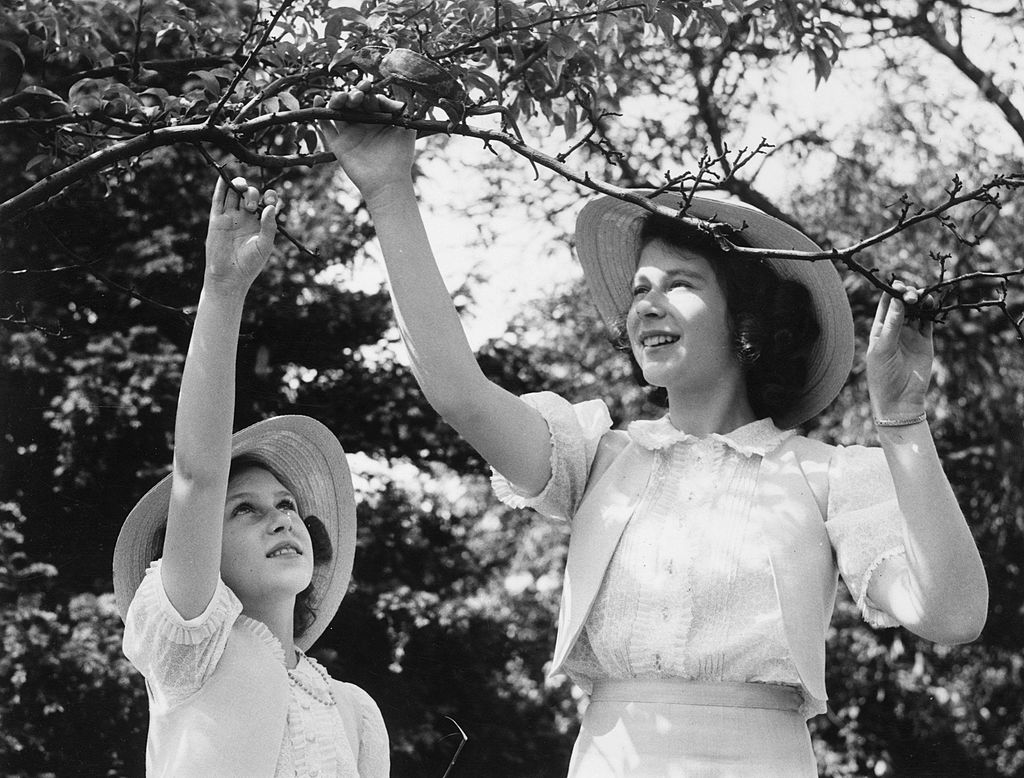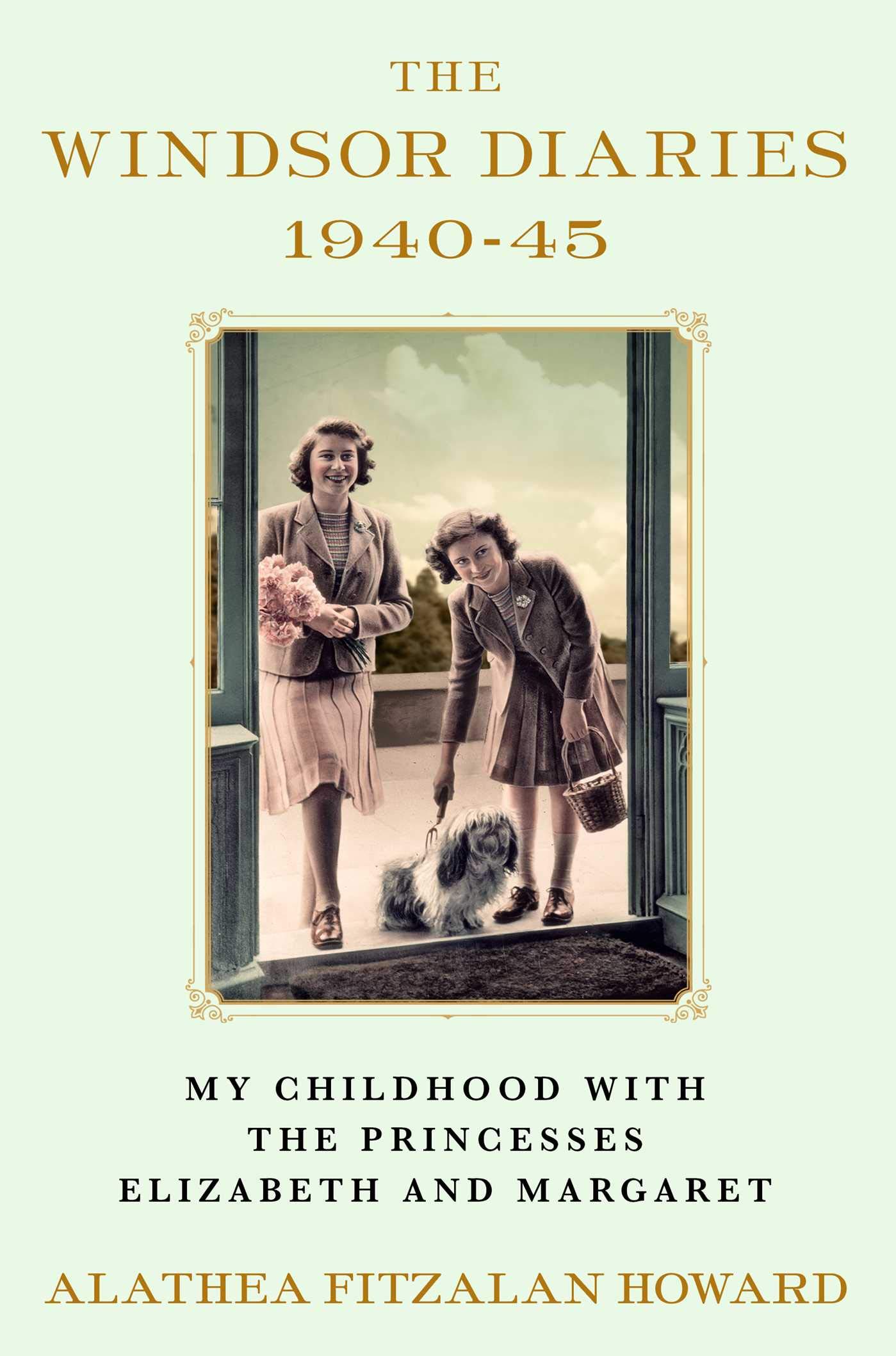
Had Alathea Fitzalan Howard been a boy, she would eventually have become the Duke of Norfolk. Instead, as the elder daughter of the second Viscount Fitzalan of Derwent, and of Joyce Langdale, who later became Countess Fitzwilliam, perhaps her greatest claim on history is that she left a record that provides a unique window into life in England at the dawn of World War II—and what that time was like for the nation’s future Queen.
At the beginning of the war, Alathea was sent from London to live with her rather staid grandfather Lord Fitzalan and maiden Aunt Magdalen at Cumberland Lodge in Windsor Great Park, her mother visiting rarely. Alathea’s father, known as Boydey, was a distant figure. She had one adored sister, ten years younger, Elizabeth-Anne, whom she seldom saw. Viewed through the eyes of a teenager, Cumberland Lodge must have been a gloomy household—indeed quite likely through anyone’s eyes!
As she recorded, despite the comparative safety of Windsor Great Park, the war was never very far away. “[One of the girl guides’] parents had both been killed by a bomb and I’m beginning to realize now that this war has a greater, a deeper meaning of terror than one would ever guess looking at the surface of things”
Alathea was woken one morning when a German bomb went off nearby: “I lay in speechless horror watching my walls rock violently from side to side. Later in the morning we heard that the Pearces’s house had been hit and one of the sons killed. Oh! the horror of the tragedy that has befallen this poor family. Oh! dear God preserve us …”
But Alathea had one solace: the friendship she had with Princess Elizabeth and Princess Margaret, who likewise had left London for the safer option of Royal Lodge in Windsor Great Park, and thereafter Windsor Castle. Alathea spent a great deal of time whirling up and down the Long Walk, an avenue in the park, riding her bicycle to the Castle to spend her days with the Royal Family.
By that time, Alathea had been keeping a diary for four years, as many children did; those early journals were later destroyed, as she felt they were too childish, but for decades a diary would be her constant companion—and the later installments survived. In fact, Alathea hoped one day the diaries would be published. And she had good reason to believe such a project would be worthwhile: the diaries offer fascinating insight into the world of a girl during the war, as well as glimpses of the life of the Royals, who showed Alathea such kindness during this time of great uncertainty. Through the unfiltered prose of a young writer, an intimate portrait of then Princess Elizabeth emerges.
Apart from her diaries, which were of great comfort to her, Alathea’s happiness revolved around her friendship with the Princesses. There is a great deal in the diaries about her time with them and, although clearly devoted to them, she is not averse to straight-talking, for instance describing the young Prince Philip as “not my type.”
In one particularly charming entry on April 3, 1941, the 14-year-old Princess Elizabeth (Lilibet) confides in Alathea about Prince Philip being “her boy,” saying she “cuts photos [of him] out of the paper.” In turn, Alathea tells her of her own teenage crush and records Lilibet as saying, “We part today the wiser for two secrets.”
The diaries produce a very real and personal account of conversations and occasions at the time. The Queen’s childhood, far more sheltered than the childhoods of today’s young royals, was full of simple adventures: “We all dragged an old garden cart down to the rubbish heap below the vicarage and filled it with old iron etc and dragged it back to the garden (the detective helping)! Then we played charades indoors. Margaret’s rather silly but she’s very sweet. Lilibet’s stopped wearing socks. Crawfie [the Royal governess] kissed me goodbye! Heavenly day.”
Get your history fix in one place: sign up for the weekly TIME History newsletter
Frogmore, considered a Royal retreat, within the Home Park and adjoining Windsor Castle, was a particular favorite destination for the Royal Family, and they spent many happy days there, walking dogs and ponies through the gardens, picking raspberries and punting on the lake with “their stockings down to prevent tearing them,” or simply lying on the grass talking and laughing. They also picnicked by the little Gothic ruin built by Queen Victoria. Alathea describes the lake as a “lovely lake for skating, as islands and bridges to go under.” She goes on to write: “Lilibet rang up and asked me to stay for the film and to skate, so I took all my things to change into after dancing. We did elementary ballet today, which was fun, and also a Hungarian rhapsody! I sat next to the King at lunch and got on v. well, and in afternoon we all drove down to Frogmore where the K and the princesses and I skated for an hour and the Q watched. It was wonderful fun.”
Frogmore being so private, but accessible to Alathea, provided her with happiness she lacked at home. “Here in this blissful haven where I have been happier than anywhere else on earth, it was soothing to wander for a little, quite alone. The evening was beautiful and peaceful…”
After the war the princesses returned to Buckingham Palace and Alathea returned to London, where she worked for Red Cross helping trace displaced people. But she kept writing in those diaries.
Years later, after I had married Alathea’s nephew, she came to stay with us, and one evening when she was sitting by the fire and writing in what looked like a journal, I asked her what she was doing. She replied, “You know perfectly well and you’ll just have to wait!” I did not know perfectly well, but I did wait, and it came as a great surprise and honor when six decades of her most personal thoughts were left to me on her death in 2001.
I decided to publish the first six years as The Windsor Diaries. Taken together, they show the characters of the princesses and the other members of the Royal Family, as they were perceived by Alathea, contemporaneously and with no element of hindsight, with fresh daily accounts, almost all not to be found in any biographies. It is a unique world that was sheltered, limited because of the war and, perhaps surprisingly given the global context of the time, innocent. Our childhoods shape our futures, and monarchs are no exception to that rule. For nearly 70 years, even through times of turbulence, Queen Elizabeth’s reign has been one of great stability. Perhaps the world of Windsor to which Alathea’s diaries offer access, stable as it was even amid war, helped sow the seeds of what was to come.

The Windsor Diaries: My Childhood with the Princesses Elizabeth and Margaret by Alathea Fitzalan Howard is available now from Atria Books
More Must-Reads from TIME
- Donald Trump Is TIME's 2024 Person of the Year
- Why We Chose Trump as Person of the Year
- Is Intermittent Fasting Good or Bad for You?
- The 100 Must-Read Books of 2024
- The 20 Best Christmas TV Episodes
- Column: If Optimism Feels Ridiculous Now, Try Hope
- The Future of Climate Action Is Trade Policy
- Merle Bombardieri Is Helping People Make the Baby Decision
Contact us at letters@time.com